Get PeakVisor App
Sign In
Search by GPS coordinates
- Latitude
- ° ' ''
- Longitude
- ° ' ''
- Units of Length

Yes
Cancel
Share ×

Scan the QR code and open PeakVisor on your phone
❤ Wishlist ×
Choose
Delete
The Scandinavian Mountains are the largest mountain range that’s located in northern Europe’s Scandinavian Peninsula. The main feature of the range is the amazingly beautiful landscape of the Norwegian fjords, which are long, narrow, and rocky inlets. In total, there are 141726 named peaks in the Scandinavian Mountains. The highest and the most prominent summit in the range is Galdhøpiggen (2,469 m / 8,100 ft).
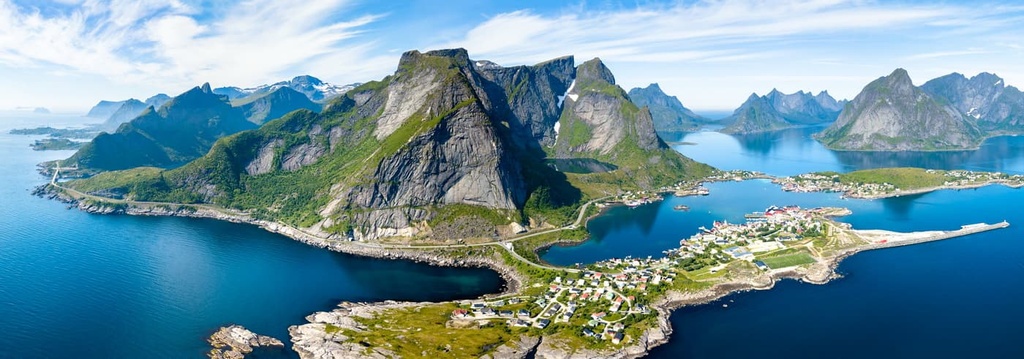
The name of the Scandinavian Mountains (also called the Scandes or the Scandes Mountains) comes from that of the range’s namesake peninsula, the Scandinavian Peninsula.
This peninsula is located in northern Europe and it roughly corresponds with the geographical, historical, geological, cultural, and linguistic region called Scandinavia. According to most sources, the word Scandinavia is of Proto-Germanic origin and it means “island.”
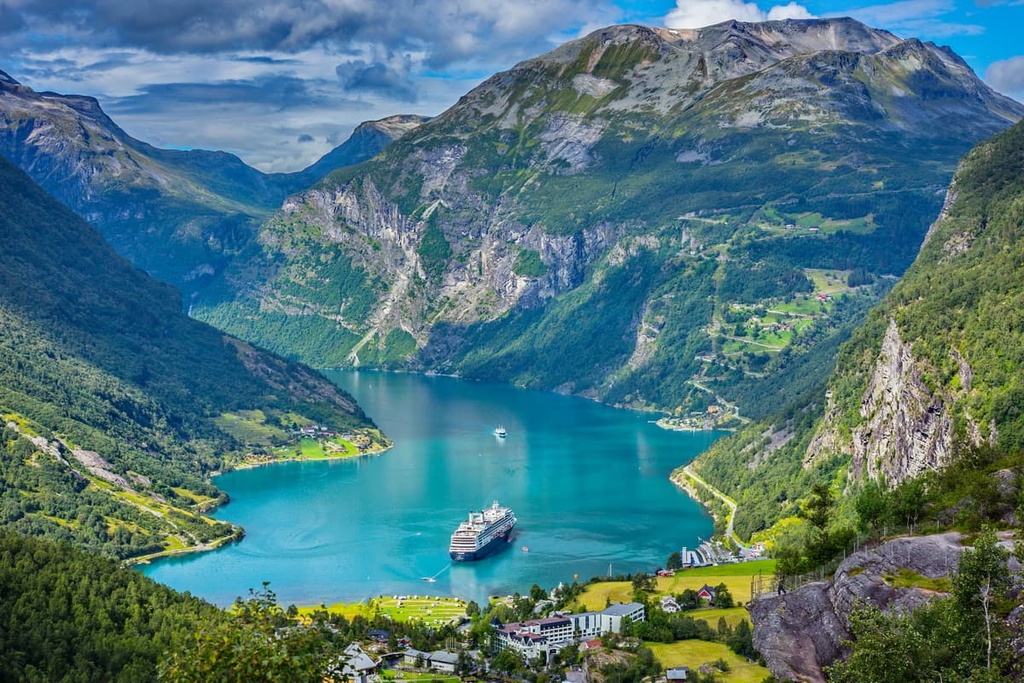
That said, the name “Scandinavian Mountains” is not the term used locally by the people of Scandinavia. In Norwegian, the range is called Kjølen, and in Swedish, the range is called Skanderna. Although Finland is not technically Scandinavian (it is considered by most to be a Nordic country, but not a Scandinavian one), the country contains a small part of the range, and the Finns call it Skandit.
The Scandinavian Mountains are famous around Europe, so they have different names in all of the European languages. For example, the range is called the Monti Scandinavi (Italian), Alpes scandinaves (French), Alpes escandinavos (Spanish), Skandinavisches Gebirge (German), and Skandinavskie Gory (Russian).

The Scandes Mountains run along the entire western part of the Scandinavian Peninsula, which means that this mountain range covers the bulk of the territory of Norway. They also cover a small portion of western Sweden, particularly in the northern part of the peninsula.
In the north, the Scandinavian Mountains also ever so slightly cross the Norwegian border into the Finnish Lapland region. The northern part of the range even borders the portion of Russia that’s located on the Kola Peninsula of the Murmansk Oblast.
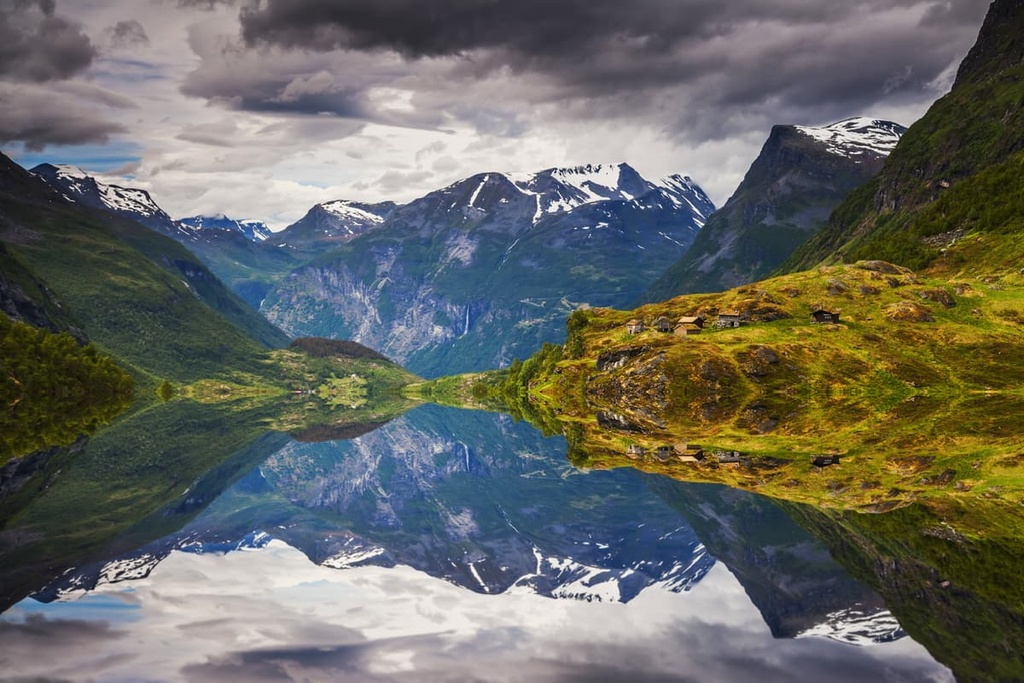
Due to the range’s location within Norway, it also features many of the country’s famous fjords, which are dotted along the coast of the North Sea and the Norwegian Sea of the Atlantic Ocean as well as the Barents Sea of the Arctic Ocean.
The Scandinavian Mountains are also the longest mountain range in Europe. The range is approximately 1,762 km (1,095 mi) in length, which is a few hundred kilometers longer than the Carpathian Mountains (1,500 km / 900 mi) of Central and Eastern Europe and the Alps (1,200 km / 750 mi) of southwestern Europe.
The origin of the Scandinavian Mountains is a subject of much debate among geologists. But it is believed that these mountains formed about 400 million years ago during the Devonian and Ordovician geological periods. At the same time, mountain-building events were taking place across many other parts of northern Europe and North America, such as Ireland, Greenland, Spitsbergen, and Scotland, among others.
The rocks in the Scandinavian Mountains, which are mainly gneisses and granites, are much older than the range itself. According to some estimates, the rocks in the range are around 2.7 billion years old.
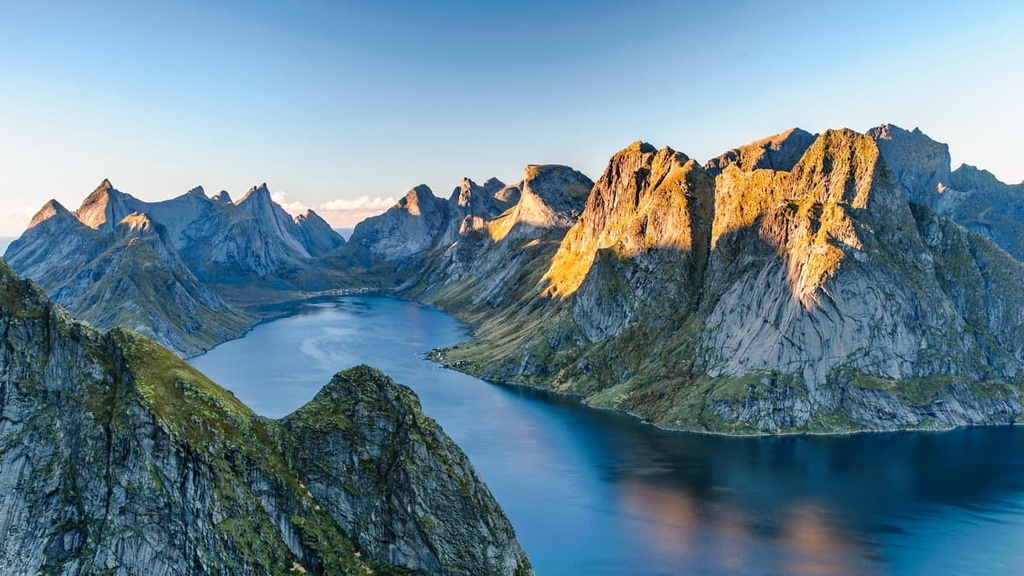
With respect to the fjords, which are what makes these mountains so famous, they are the result of glacial erosion that took place during the last major glaciation.
As these glaciers, which once covered much of northern Europe, were pulled downhill and toward the ocean by the forces of gravity, they carved out deep, narrow valleys. After the glaciers melted, they left behind the rugged, seawater-filled valleys that we see in the region to this day and now refer to as fjords.
The most famous fjords of the Scandes Mountains are Baknafjord, Geirangerfjord, Hardangerfjord, Moldefjord, Sognefjord, Trondheimfjord, and Vestfjord.
Glaciers also helped in the formation of the other long and wide terrestrial valleys of the Scandes. According to the PeakVisor database, there are still more than 2,000 glaciers in Norway that cover a total area of around 2,787 sq km (1076 sq mi).
The other no less famous natural features of the Scandinavian Mountains landscape include stunning mountains, fast-moving rivers and deep lakes (such as Mjøsa, Røssvatnet, and Femund), more than 50,000 islands, and a collection of incredibly picturesque mountain roads with hairpin turns, such as the Trollstigen (Trolls Ladder).
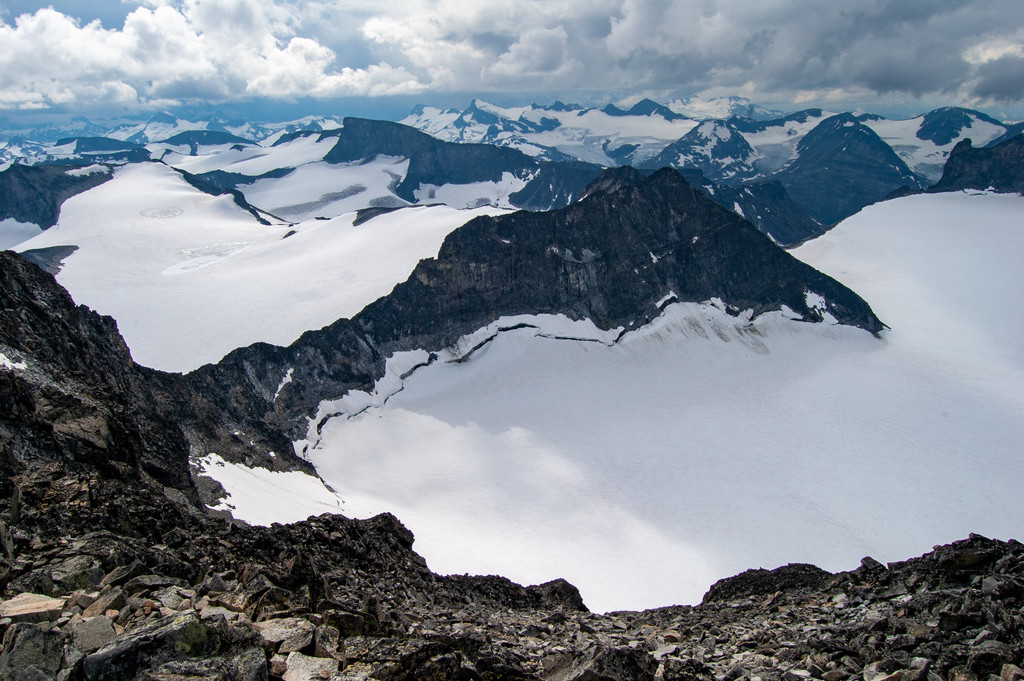
The Scandinavian Mountains are one of more than 40 large mountain ranges in Europe. Here’s a look at some of the most notable subranges and peaks in the Scandinavian Mountains.
Within the Scandes of Norway, there are at least seven smaller subranges. These ranges are listed below alongside their highest peaks.
Southern Norway Mountain Ranges
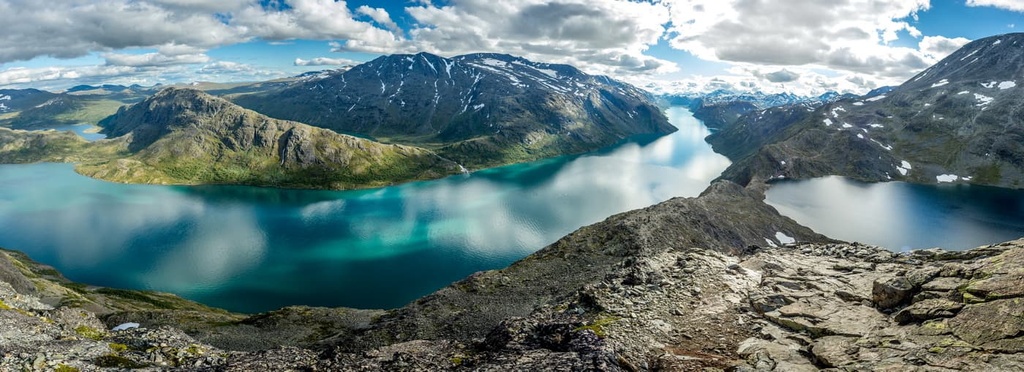
Central Norway Mountain Ranges
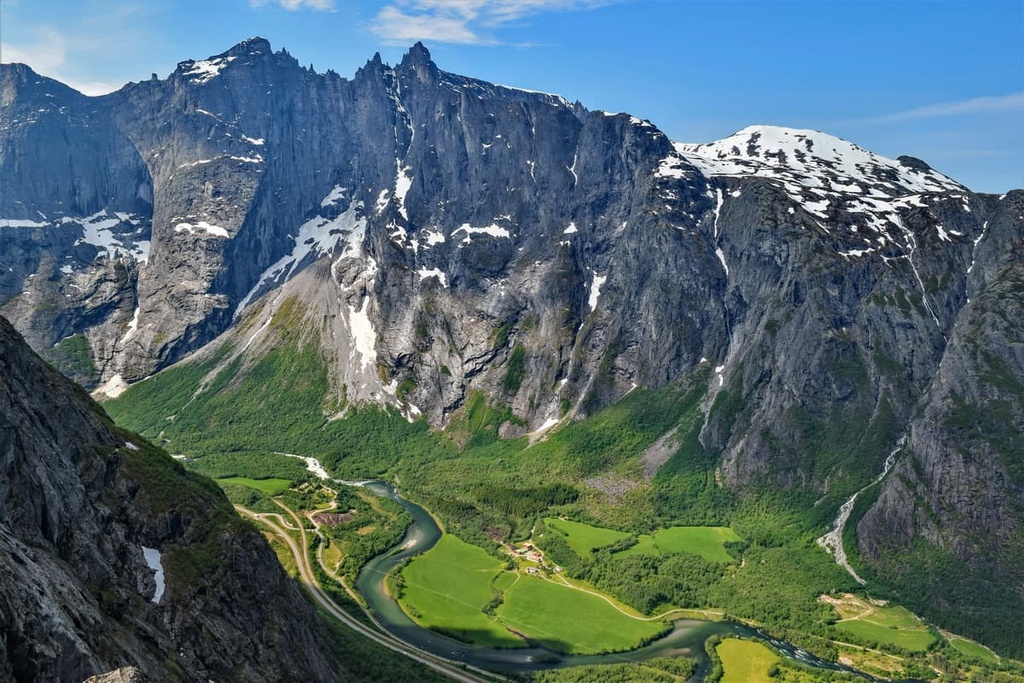
Northern Norway Mountain Ranges
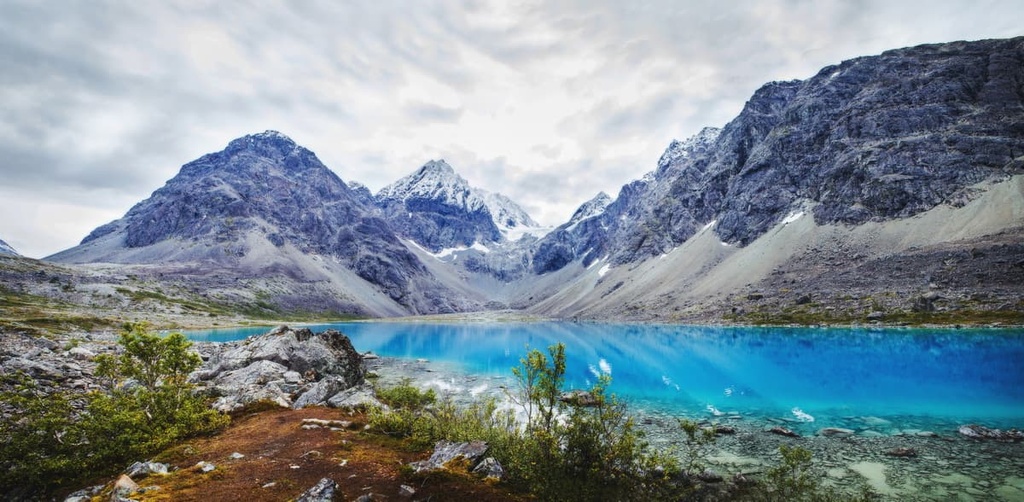
The Jotunheimen Mountains, though relatively small in size, (they have an area of roughly 3,500 sq. km / 1,350 sq. mi), are the most important subrange of the Scandinavian Mountains because of their height and proximity to the capital city of Oslo.
Not only does the range contain the highest peak in the country, Galdhøpiggen (2,469 m / 8,100 ft), which has an incredible prominence of 2,436 m (7,992 ft), but it also contains more than two dozen of the highest peaks in the country. Five of these peaks, including Galdhøpiggen, are ultra-prominent mountains with prominences of more than 1,500 m (4,921 ft).
The Jotunheimen is also often referred to as a larger mountain area called the Lang Mountains (Langfjella), which also includes the Jostedals Glacier, the Hardanger Ice Cap, the Hardanger Plateau, the Bykle Hills, and many other natural features.
Norway is home to more than 300 mountain peaks that are over 2,000 m (6,561 ft) in elevation. Many of them are recognizable and popular among the Norwegians themselves and their neighbors, the Swedes and Finns, as well as travelers from other countries.
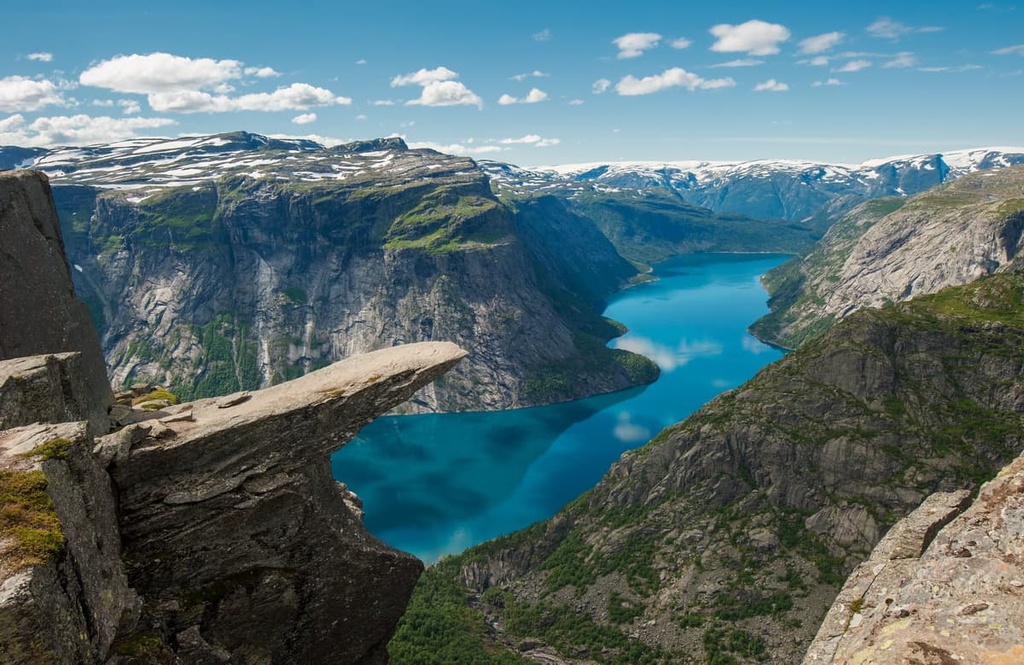
The most famous peak of the range is Trolltunga (1,100 m / 3,600 ft), which is also referred to as the ‘Troll Tongue.’ It is a super-scenic rocky summit that’s also the main natural tourist attraction in Norway.
Trolltunga is located on the Hardangervidda Mountain Plateau in the Ullensvang Municipality of the Vestland Socintu County near the town of Odda. The cliff offers magnificent views of Ringedalsvatnet Lake and the surrounding mountains.
The other must-climb peaks in the Scandinavian Mountains of Norway include:
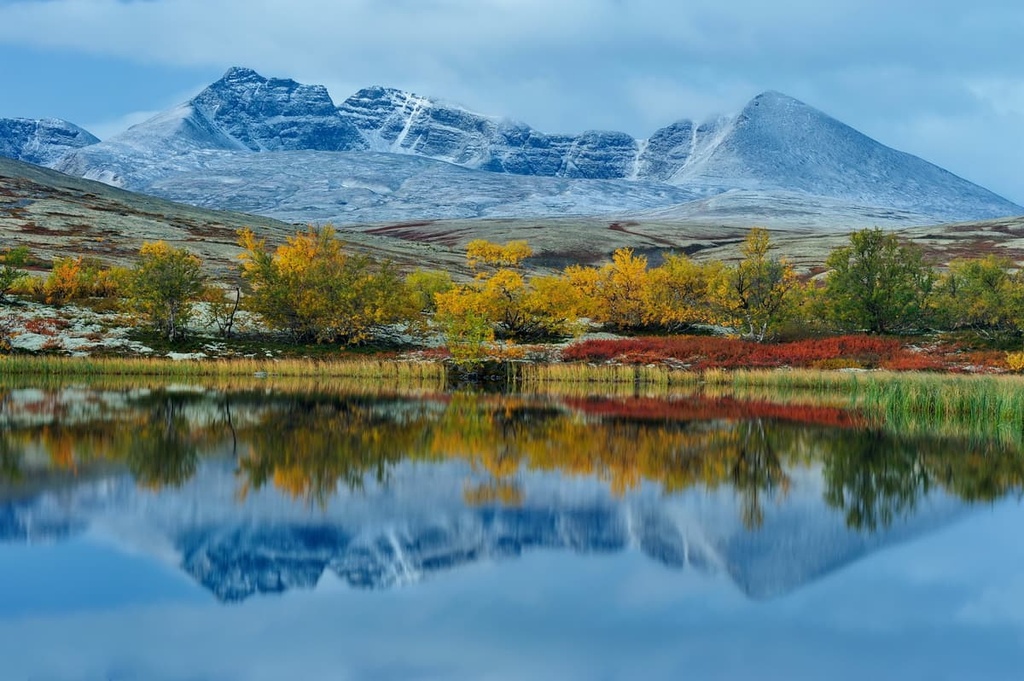
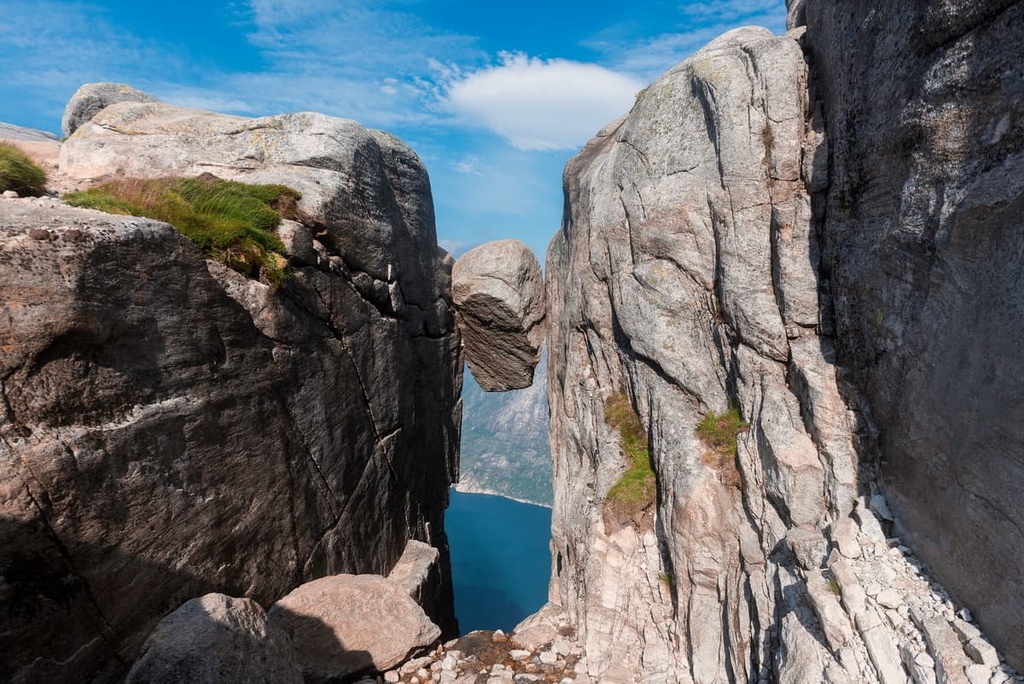

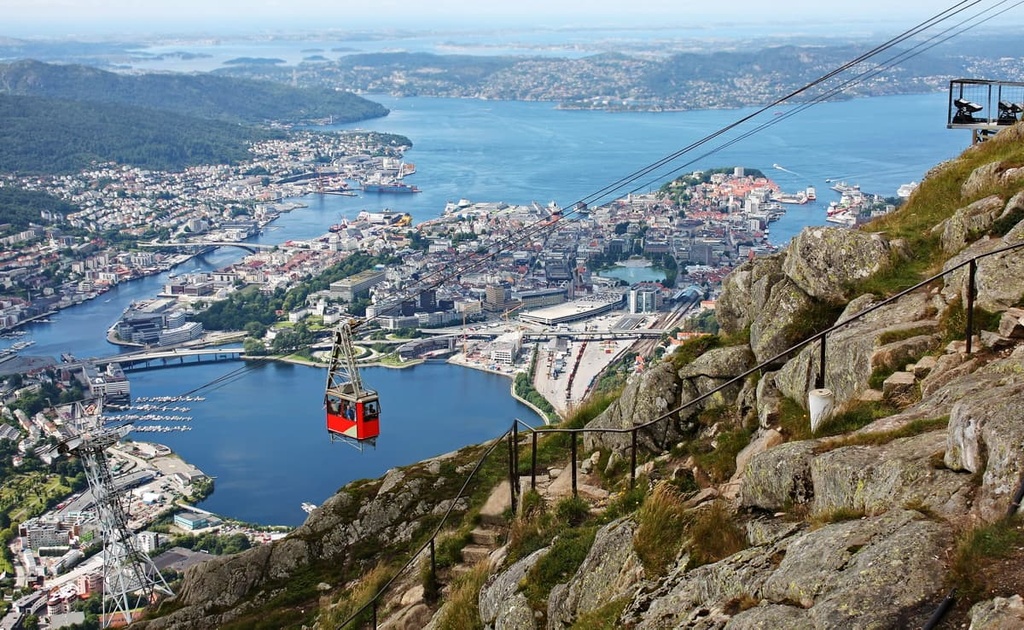

On a separate note, we should also mention that the range contains the rocky North Cape (Nordkapp in Norwegian), which is often falsely called the northernmost point of Europe, even though the neighboring Knivskjellodden Cape extends for over 1,450 m (4,760 ft) further to the north.
In any case, both points are situated on Magerøya Island. The real northernmost point of mainland Europe is Nordkinn Cape (Kinnarodden) which is located about 5.7 km (3.5 mi) to the south and about 70 km (43 mi) to the east of these other capes. That said, Nordkapp is the northernmost part of the continent that you can get to by car.
However, when speaking about the Scandes Mountains, we can not forget about Sweden and Finland, the highest mountains of which are also located in the range.
In Sweden, the Scandinavian Mountains contain 12 peaks that reach elevations above 2,000 m (6,600 ft). This includes the country's highest peak, Kebnekaise (2,104 m / 6,903 ft). Meanwhile, in the Finnish section of the range, there are all 10 peaks above 1,000 meters (3,280 feet) in elevation, including the country’s highest peak, Halti (1,324 m / 4,344 ft).

As the mountain range that’s home to Norway’s highest peaks, the Jotunheimen Mountains are a major hiking area in the Scandinavian Mountains. The range is also included as part of one of Norway’s 47 national parks, Jotunheimen National Park, which has 50 marked hiking trails.
In each of the national parks, though, you’ll find an extensive system of trails of varying lengths and levels of difficulty. According to The Norwegian Trekking Association (Den Norske Turistforening or DNT in Norwegian), which manages the trails system in Norway, there are about 22,000 km (13,670 mi) of marked hiking trails in the country.
The main hiking trails in the Scandinavian Mountains in Norway lead to the country’s most famous peaks:
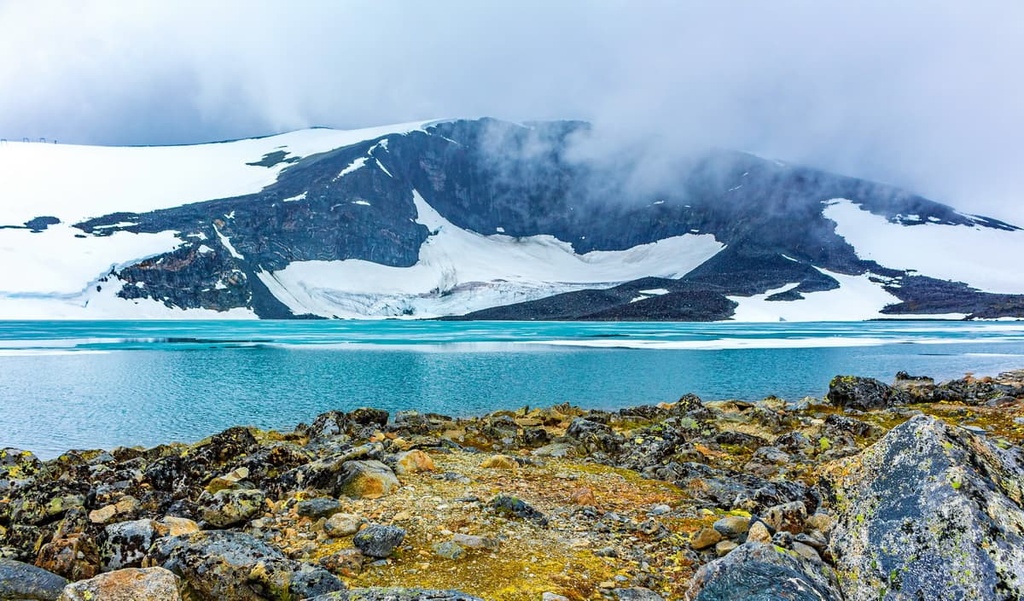
As far as long trekking routes, go, there are a handful of popular hikes in the Scandinavian Mountains, including:
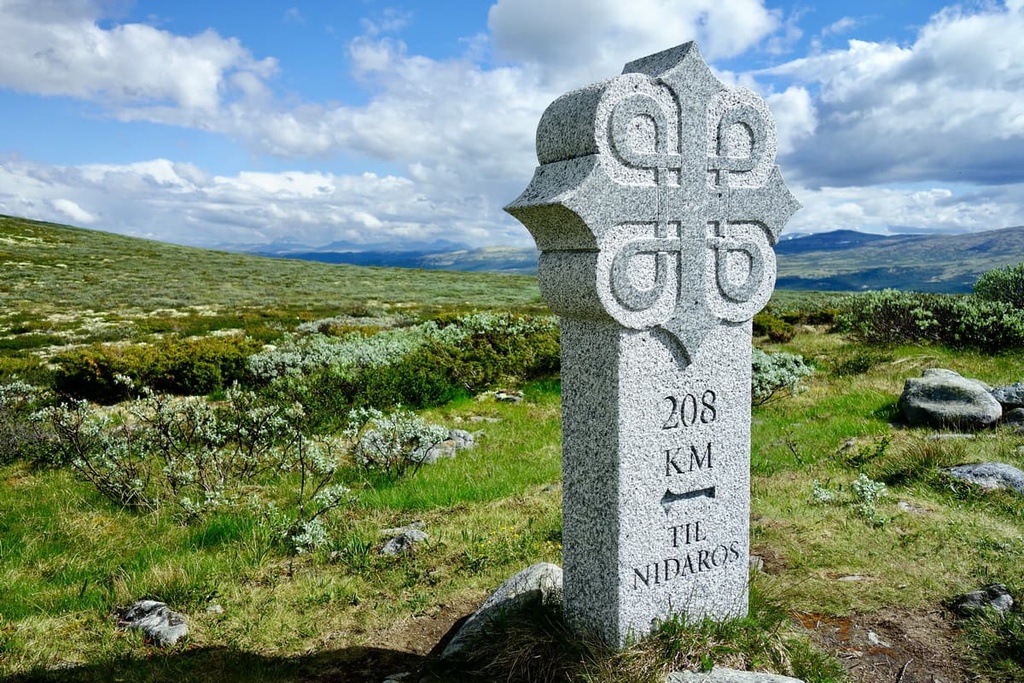
Of course, most hikers choose to complete just parts of these very long trails. For example, if you want to hike just a section of the King’s Trail, you can complete the Fjällraven Classic Route, which is 110 km (68 mi) long and takes you to Nikkaluokta.
Finally, the main area for hiking in the Scandinavian Mountains of Finland is the Käsivarsi Wilderness Area, which covers almost the whole extreme northwestern part of Lapland.
In this wilderness area, the Kilpisjärvi–Halti Trail is the main route in the area that takes you to Finland’s highest peak. The route is 55 km (34.1 mi) long one way, which means that you will have to walk a minimum of 110 km (68.3 mi) to do the hike as a round-trip.
The Scandinavian Mountains of Norway, Sweden, and Finland are a great place, not only for hiking, but also for skiing and snowboarding. Both large and small ski resorts are located throughout the country of Norway, but the highest slopes are also in the south. Here are the top 10 largest ski resorts in Norway based on their number of slopes and lifts:
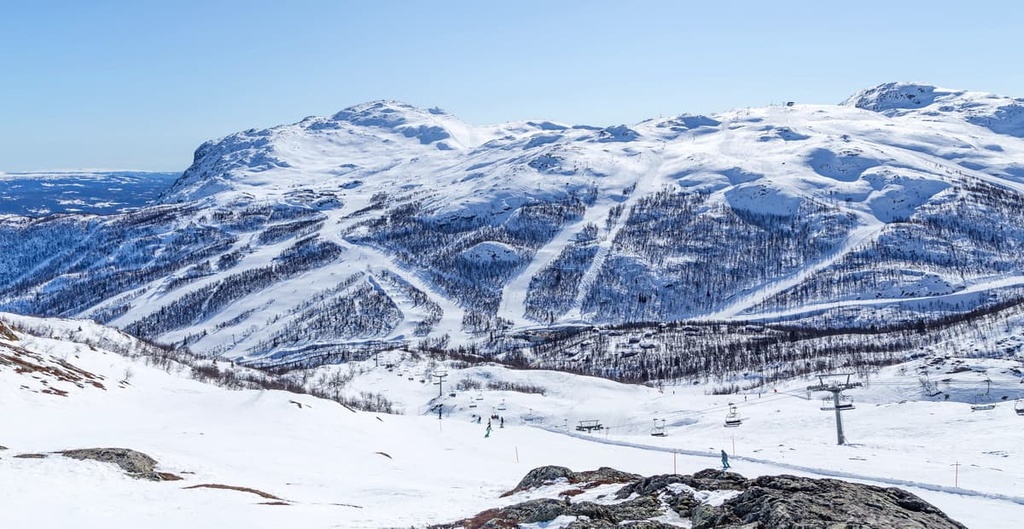
You can find out more about the ski resorts in Norway on the World Mountain Lifts section of Peakvisor’s website, which also shows the real-time status of ski lifts and trails at hundreds of resorts around the world
The Norwegian Trekking Association also manages more than 7,000 km (4,349 mi) of marked cross-country skiing trails in the country. Many of these trails are located near populated areas, which makes cross-country skiing more accessible to everyone in the region.
Before and during your trip to the Scandes Mountains, be sure to visit the official tourist sites of Norway, Sweden, and Finland to find more information about these mountains and to better plan your trip. These tourism information sites are VisitNorway.com, VisitSweden.com, and VisitFinland.com.
There are also official tourist resources for individual regions of these countries. For example, if you’re going hiking in Lapland, it’s a good idea to explore the Lapland.fi website, which is informative and showcases the Finn’s excellent sense of humor.
To learn more about specific areas of the range, you can also check out the individual PeakVisor pages for the different parks and regions that you’re traveling to within the Scandinavian Mountains.
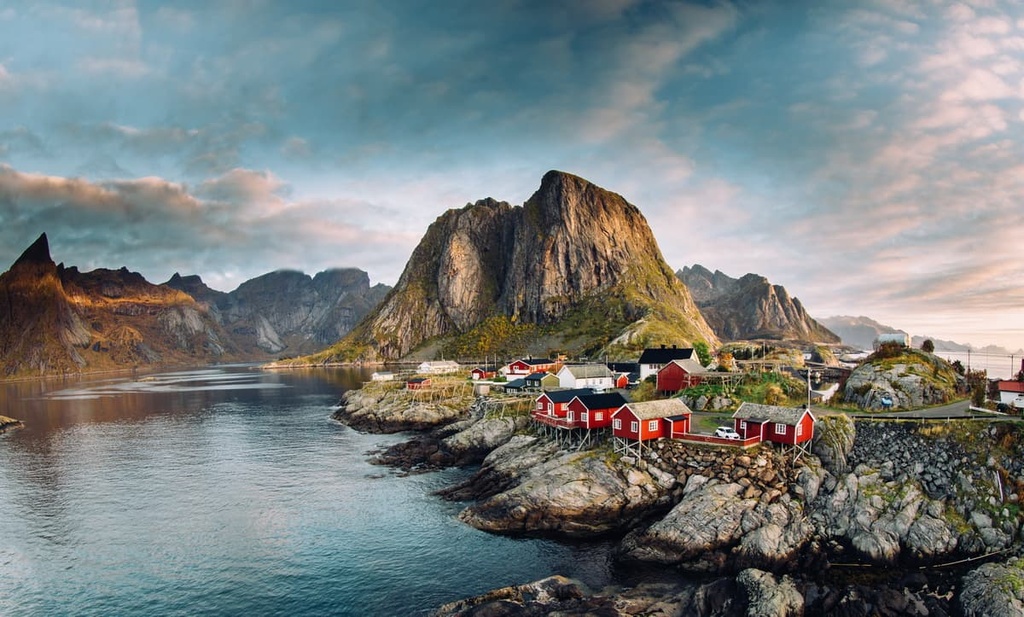
Mountain cabins (such as huts and lodges) are the most common type of accommodation for hiking and skiing in the Scandinavian Mountains of Norway, Sweden, and Finland. However, you can also camp throughout much of the range. Here’s what you need to know before your next trip to the Scandinavian Mountains.
The Norwegian Trekking Association (DNT) runs more than 550 cabins all over Norway. There are three main types of DNT cabins:
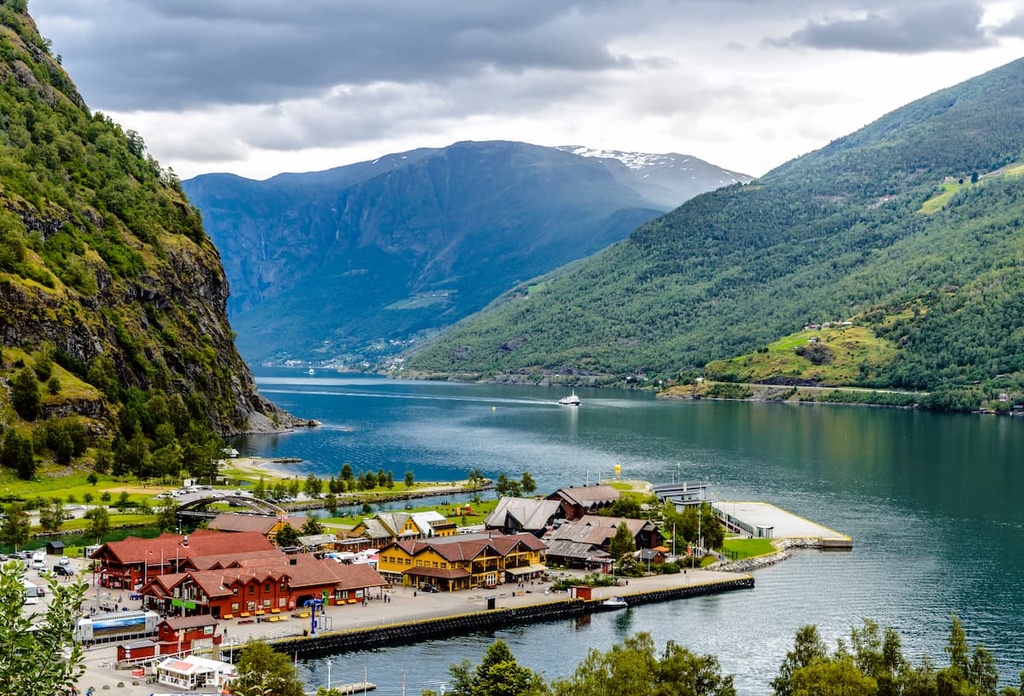
Of the more than 550 huts in Norway that are run by the DNT, about 450 are either self-service or no-service cabins. Most self and no-service cabins are open year-round, but the ones in Jotunheimen, Skarvheimen, Hardangervidda, and some other mountain areas are closed from the 15th of October until February or March.
The staffed lodges in Norway are typically open during summer, though some are also open during winter. You can find out the exact opening dates of the lodges and cabins on Ut.no, but keep in mind that the site is only available in Norwegian.
That said, the coolest thing about the DNT huts in Norway is that you can get access to them simply by becoming a member of the association. You also get reciprocity rights to the cabins if you’re a member of the Swedish, Finish, or Icelandic trekking associations.
Once you do, you can pick up a key for the self-service and no-service cabins at the DNT Tour Information Centre in Storgata 3, Oslo. You have to put down a deposit for the DNT key (normally 100 NOK), but you can borrow a key for as long as you are a member of the DNT (or a member of the Swedish, Finish, or Icelandic trekking associations).
A roughly similar system is in place in Sweden, where various types of outdoor accommodations are managed by the Swedish Tourist Association (Svenska Turistföreningen, STF). In Sweden, your mountain-based accommodation options include STF hostels, hotels, guest houses, mountain stations (“a marvelous cross between mountain hotel, hostel, and bed-and-breakfast”), and mountain cabins.
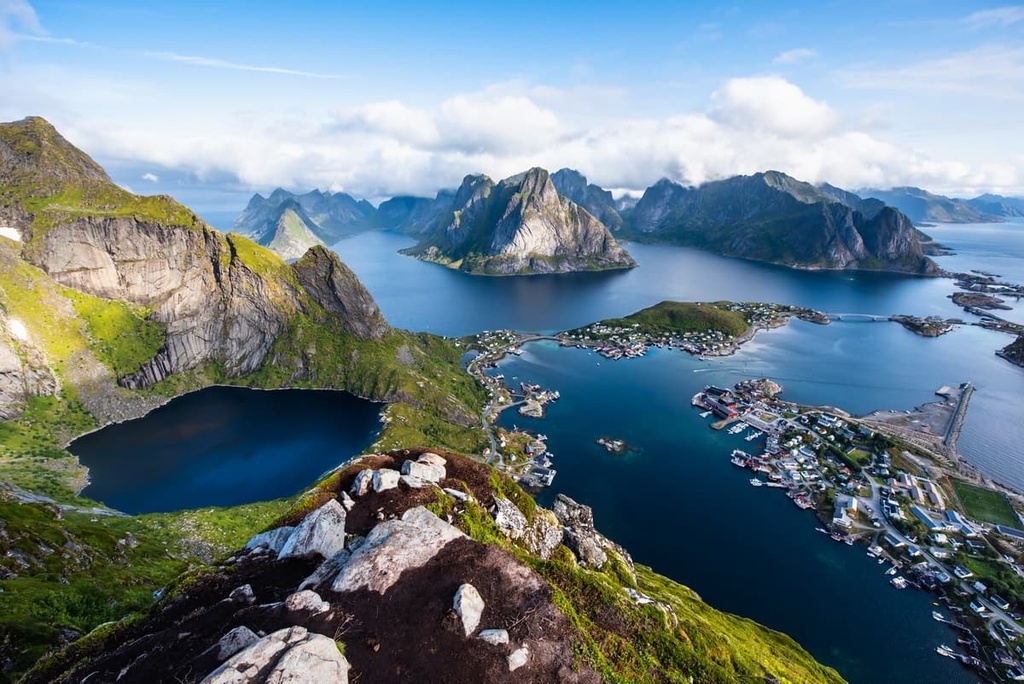
In Finland, where lodging is managed by Metsähallitus, the Finnish Forestry organization, there are no mountain huts similar to rifugios. The most common type of hut in Lapland is the open wilderness hut, which is similar to a no-service cabin in Norway. That said, one unique thing about Finland is that you can rent an entire cabin for the night if you’re traveling with a group.
Alternatively, you can always camp in a tent if you’re hiking in the Scandinavian Mountains.
In Norway, Sweden, and Finland, you can pitch your tent nearly wherever you’d like, even on private property. This is because all of these countries have some sort of right to roam (everyman’s right) law, which effectively gives you the opportunity to hike and camp wherever you want, so long as you are respectful of others and the environment.
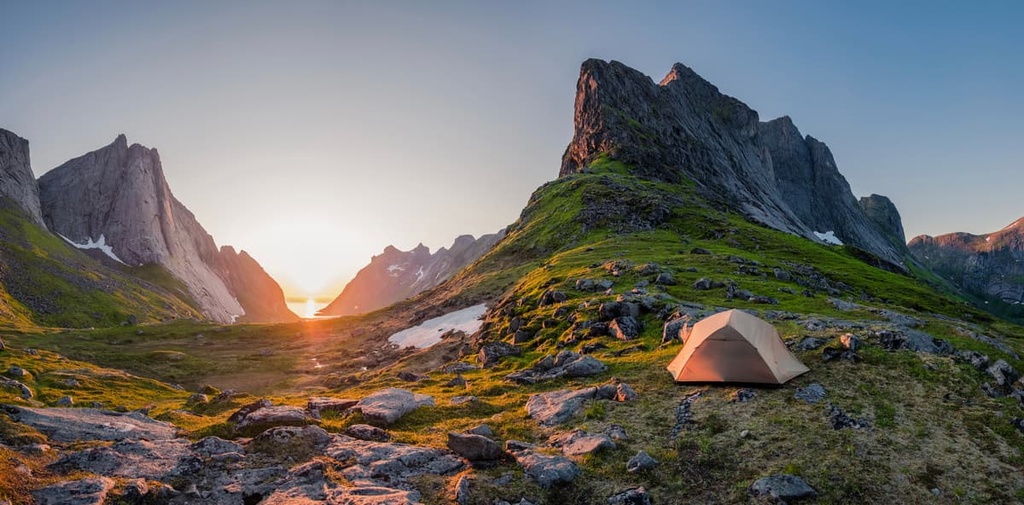
Keep in mind that there are some limits on the right to roam in these areas, particularly in highly protected regions or restricted locales. For example, in Finland’s wilderness areas, you can camp wherever you want. But in the country’s national parks and nature reserves, you can only camp in designated areas.
Oslo and Bergen are the two main cities in the southern part of Norway. Because of their proximity to the mountains, Oslo and Bergen are also major resort destinations in the country. In the central part of Norway, Trondheim is the major city and resort area. In the northern part of Norway, there are no major cities, but the most important communities in the area are Tromsø, Brønnøysund, Mosjøen, Nesna, Fauske, and Narvik.
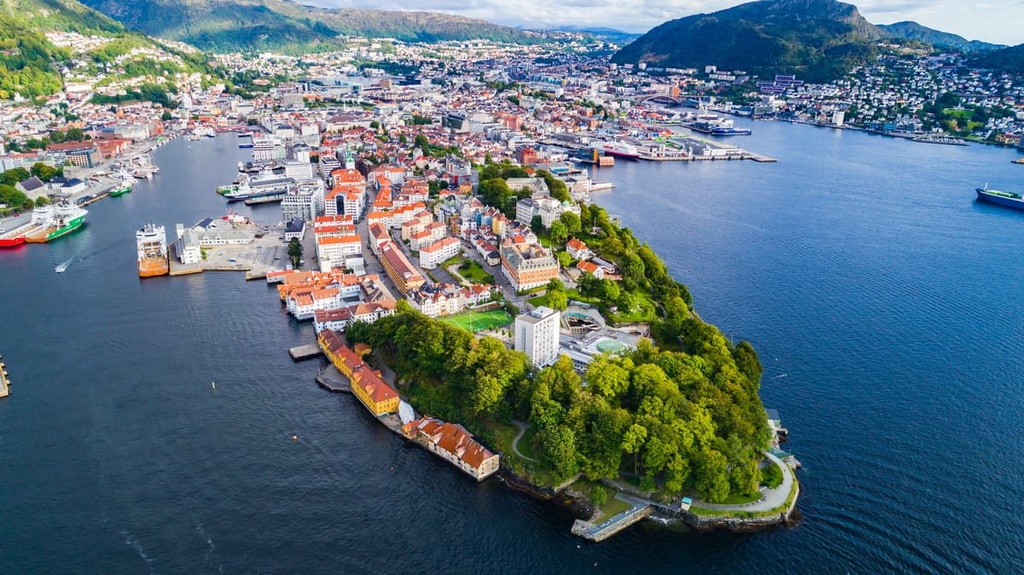
In Sweden, the Scandinavian Mountains are less populated because of their remoteness and distance from the main cities of Stockholm, Malmö, and Gothenburg. Most settlements in the mountains of Sweden are small villages like Abisko. However, in the south of the Scandes in Sweden, you can find the community of Åre, which is one of the leading Scandinavian ski resorts.
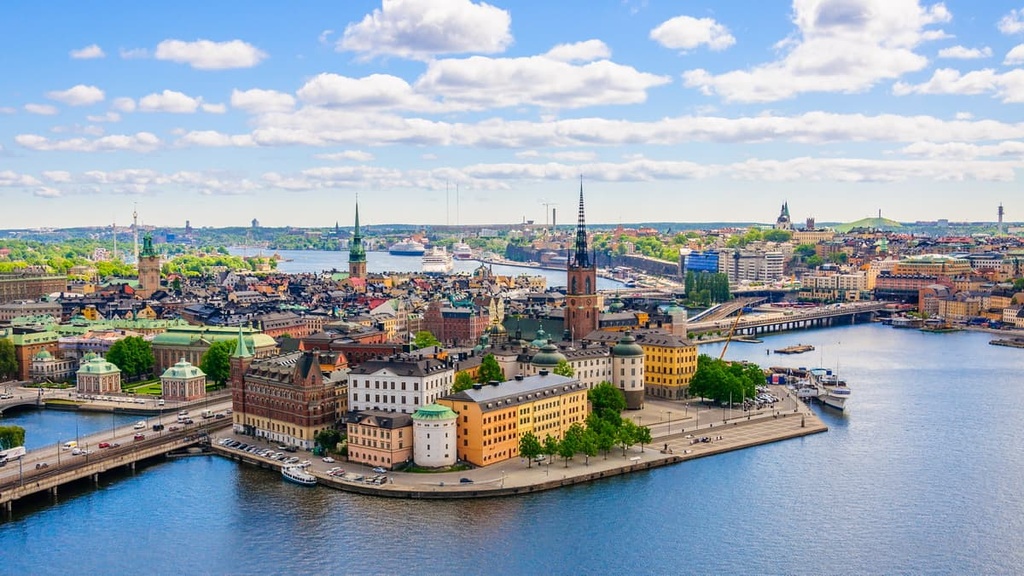
Finally, the largest settlement in the Scandinavian Mountains of Finland is the Lapland village of Kilpisjärvi in the municipality of Enontekiö, which has approximately 1,800 residents. Kilpisjärvi is particularly famous for being located near the so-called Tripoint, or the point where the borders of Finland, Sweden, and Norway meet. You can reach the tripoint from the village on foot.
Explore Scandinavian Mountains with the PeakVisor 3D Map and identify its summits.








